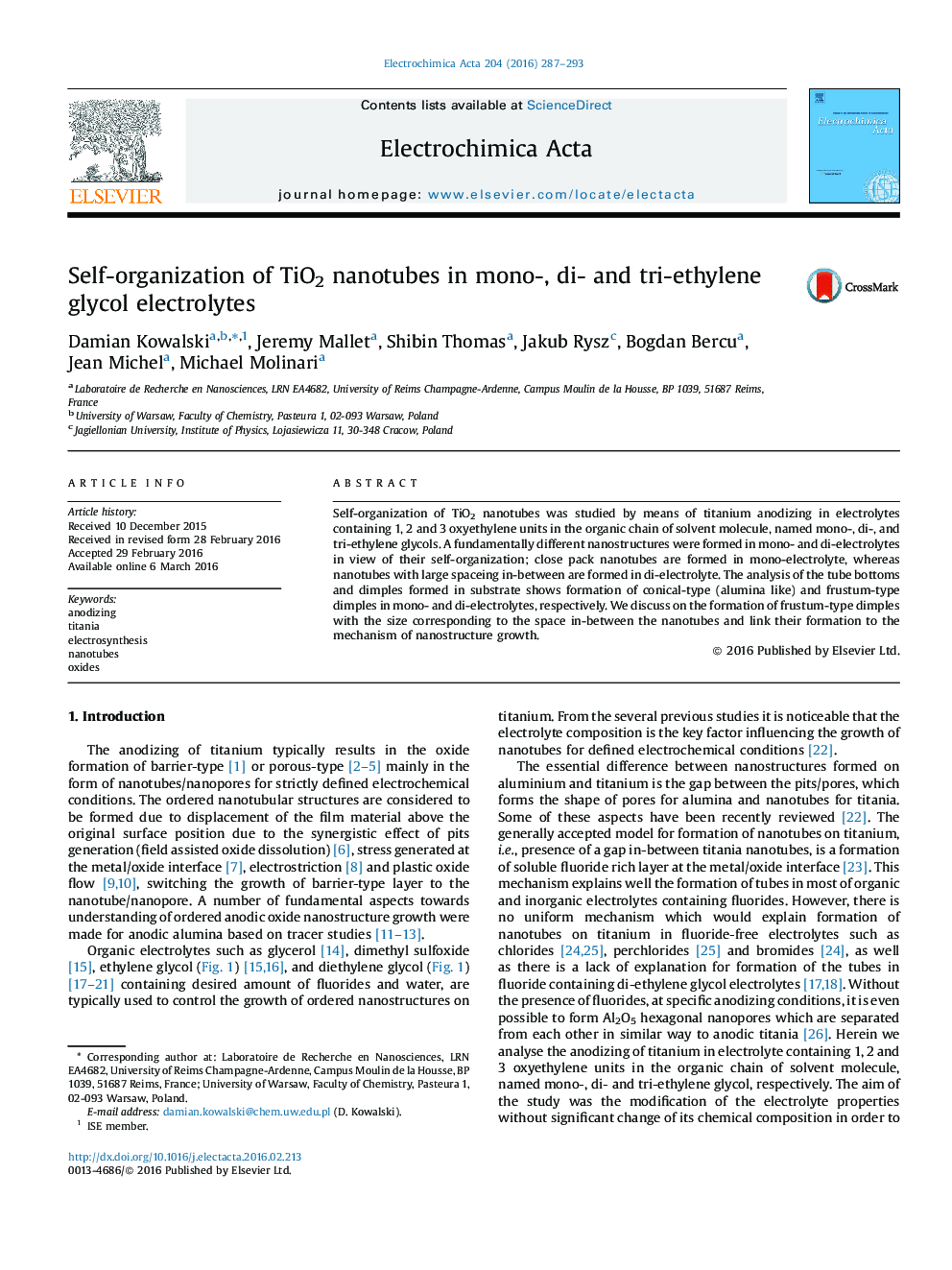| کد مقاله | کد نشریه | سال انتشار | مقاله انگلیسی | نسخه تمام متن |
|---|---|---|---|---|
| 182868 | 459526 | 2016 | 7 صفحه PDF | دانلود رایگان |

• Anodizing of titanium in electrolytes containing 1, 2, and 3 oxyethylene units in the organic chain of solvent molecule.
• Self-organization of nanotubes by means of control of interconnecting space in between nanotubes.
• Formation of and frustrum-type dimples in di-ethylene glycol electrolyte.
Self-organization of TiO2 nanotubes was studied by means of titanium anodizing in electrolytes containing 1, 2 and 3 oxyethylene units in the organic chain of solvent molecule, named mono-, di-, and tri-ethylene glycols. A fundamentally different nanostructures were formed in mono- and di-electrolytes in view of their self-organization; close pack nanotubes are formed in mono-electrolyte, whereas nanotubes with large spaceing in-between are formed in di-electrolyte. The analysis of the tube bottoms and dimples formed in substrate shows formation of conical-type (alumina like) and frustum-type dimples in mono- and di-electrolytes, respectively. We discuss on the formation of frustum-type dimples with the size corresponding to the space in-between the nanotubes and link their formation to the mechanism of nanostructure growth.
Anodizing of titanium in electrolytes containing 1, 2, and 3 oxyethylene units in the organic chain of solvent molecule named mono-, di-, and tri-ethylene glycols leads to formation of TiO2 with distinctive porous structures.Figure optionsDownload as PowerPoint slide
Journal: Electrochimica Acta - Volume 204, 20 June 2016, Pages 287–293